An offseason of change in Toronto was proceeded by an adjustment period for the players and coaches to start the 2023-24 season.
A feeling-out process was likely inevitable as not only did the Leafs have a new General Manager in place, but Brad Treliving also turned over nearly half the forward group and infused it with more offensive players rather than the checkers of years past.
To start the season, the Leafs’ issues primarily concerned their third and fourth lines. Injuries then struck on the blue line, and throughout the start of the season, they’ve battled inconsistent goaltending.
Over the past few weeks, the coaching staff has been able to sort out the depth lines. Moving Max Domi to center really helped his game, and Nick Robertson – called up on November 6 – has been effective in his role on the third line. Bumping David Kampf back down to 4C in a checking role – his ideal spot – and calling up Bobby McMann breathed new life into the fourth line.
Even the team’s defense has shown some signs of improvement as Jake McCabe’s game has settled down since he returned from injury, and realistically, there was some addition by subtraction by moving a playing-injured John Klingberg onto LTIR.
As the rest of the roster has settled in the place and some of the team’s inconsistency has continued, attention has turned to the Leafs’ top players – and rightfully so.
Auston Matthews has three hat tricks in 19 games, and yet this would be just the third-highest goals-per-game output of his career to date while shooting over two percent higher than his career shooting percentage. It speaks to the elite production overall but also to the level of consistency in production game-to-game (currently lower than expected) and the really high bar he has set for himself. Matthews’ current numbers would also represent his lowest points and shots-per-game output in five seasons.
Mitch Marner has 20 points in 19 games, but his totals are also below the standard he’s established. Marner is currently on pace for the lowest points-per-game output since his second season in the league and his lowest goals and shots-per-game outputs since his rookie season. Over those two seasons, he averaged 16:49 and 16:23 minutes per game, respectively. This season, he’s averaging 21:16 per game.
So far this season, Matthews and Marner have been on for 14 goals for and 13 goals against at five-on-five. Their shot attempts are a dead-even 50 percent and their expected goals percentage is 51.85. Those are not terrible numbers, but they are not nearly good enough for two players who the Leafs pay a ton of money and entrust with massive minutes.
Marner and Matthews are ninth and tenth, respectively, in time on ice per game among all NHL forwards. Compare their numbers to the top two duos on the other top-four teams in the East:
| Duo | Corsi % | Goals for % | Expected GF % |
|---|---|---|---|
| Sebastian Aho & Seth Jarvis | 60.16 | 68.8% | 64.19 |
| Aleksander Barkov & Sam Reinhart | 56.99 | 83.33 | 61:37 |
| Vincent Trocheck & Artemi Panarin | 58.65 | 50 | 52.24 |
| Brad Marchand & David Pastrnak | 51.91 | 56.25 | 46.52 |
| Auston Matthews & Mitch Marner | 50 | 51.85 | 51.05 |
Matthews and Marner have achieved success primarily playing with players like Zach Hyman and Michael Bunting – tireless workers who were generally happy to perform the dirty work required to get the puck. Both players were excellent on the forecheck and super aggressive as the first man in (Bunting eventually did tail off toward the end of his Leaf tenure, but by and large, he was great at forechecking; it was the extra stuff that impacted his game).
Without a Bunting or a Hyman – and currently playing alongside a relatively raw rookie – Marner and Matthews need to win the puck back themselves more, but they don’t forecheck properly on a consistent basis, particularly Marner.
The first forechecker has to attack the defender directly. The F1 is not only trying to win the puck back but also eliminate the defender from the play and establish body position. In most scenarios, a team will send the first man to tie up the defender and the second forward is meant to swoop in and collect the puck. This is what happened more often than not when Hyman and Bunting were on the line.
Now, their forechecks too often look like the video below. Marner slowed down instead of speeding up, and he didn’t come even remotely close to the defenseman on the play. Instead of actually forechecking, he peeled off and tried to read/intercept the pass. He didn’t succeed, and it was a squeaky-clean breakout that couldn’t have been much easier on the Penguins.
It’s one clip, but it’s been happening all season. The biggest concern about playing Knies alongside Matthews and Marner is that it is creeping into his habits, too, instead of forechecking directly and taking defenders out. These are really poor habits and the kind that is magnified at playoff time.
Sure, reading the breakout pass instead of forechecking will work on occasion against the bottom feeders of the league, but how often is it going to succeed against the Victor Hedmans, Aaron Ekblads, and Charlie McAvoys of the world (who the Leafs will potentially see every other night in the playoffs?). Not very often, and in almost every big game, the Leafs have come up empty in part due to these kinds of bad habits from the regular season.
It’s not like Marner is incapable or unwilling to do it, either. Below is a great example of his aggression on the forecheck. Just a few weeks ago, he laid a hit and grabbed the puck, leading to a goal:
Keefe was quick to defend his top players after the Penguins game and pointed to Marner’s team-leading five-on-five point total. But if he’s been outscored at five-on-five, has the juice really been worth the squeeze?
19 games into the season, Marner has five-on-five points in just six games. Five of those goals came off the rush, and another one came right after the initial rush chance was missed (the Leafs never lost possession of the puck). One was a faceoff play, and another came after an icing where the Leafs scored off the ensuing offensive-zone faceoff against tired defenders.
Three of the goals started with a forecheck by a teammate, and two were because of the work of Matthews/Marner. If it’s not off the rush, they have not been productive grinding on the opposition in their end and creating “in-zone” offense.
At this time, Marner has points in just two of his last seven games while Matthews has a point in just one of his last six games. Those are mini-slumps for players of their calibre, and they do happen to the best of them (this is a hard league!).
It comes ahead of a big set of games on the schedule that includes Florida (who eliminated them last spring), Boston (who seemingly still owns the division), and the rival Senators (who already beat them this season). The Leafs will be relying on Matthews and Marner for big minutes, and it should be the type of opportunity that elevates their games.
Notes
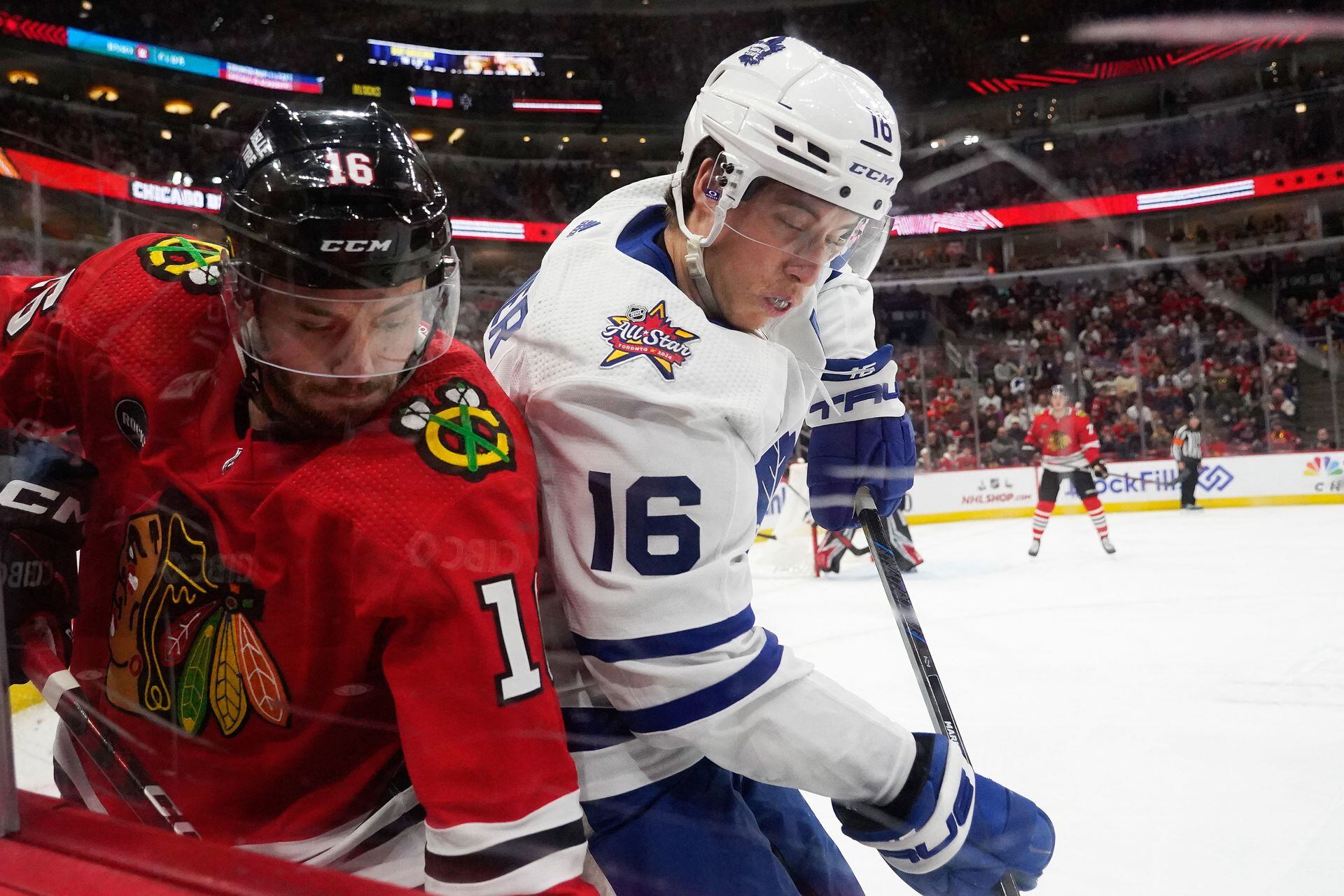
– In the second game of a back-to-back with travel after the first game went to overtime, John Tavares played 21:35, Mitch Marner played 23:26, Auston Matthews played 24:15, and William Nylander played 26:10. Predictably, they were gassed by the end of the game, and they hardly threatened in the final few minutes.
This is a movie we’ve seen quite regularly in the past few years, especially in the playoffs. A team does need to lean on its stars when playing catchup, but it can’t come at the cost of making them worse by heaping so many minutes on them or by taking the rest of the team out of the game by leaving them cold on the bench.
– The Leafs gave up a goal directly off a lost faceoff against Pittsburgh – and they did last against Minnesota, too – but they are actually sitting fourth overall in faceoff percentage (53%) and have scored a handful of goals off faceoff wins themselves. Sometimes, it’s simply going to happen; they can’t win all the faceoffs, but they can control their response.
On the Penguins goal, the faceoff was won to the wall and touched to Karlsson, but if we watch Calle Jarnkrok on the goal, he initially skated hard, hit the brakes, and tried to block the shot straight up. The Leafs have been giving defensemen a lot of space instead of playing them tightly, something we mentioned last week after two goals by Minnesota defensemen. It’s really easy for NHL defensemen to shoot it by defenders if they are afforded a ton of space and the defenders are so far away from them.
– Nick Robertson is now up to three goals and five points in eight games. He’s burying chances when he gets them – like he did against Chicago off a beautiful pass from Domi – but he has just 13 shots in his eight games and is shooting 23 percent, which is bound to regress. He has to find the right balance between shooting blindly (which has been a tendency in prior callups) and not shooting enough in general.
– I thought Max Domi and Nick Robertson deserved the shift they were rewarded within overtime against the Blackhawks on account of how well they played in the game. But it did end with the team losing the game on a shift that was quite poor all things considered. They couldn’t execute any switches defensively, and the Blackhawks circled and created chances galore until finally finishing one. When you earn opportunities, you have to make good on them.
– Tyler Bertuzzi has played zero seconds of overtime so far this season. I understand that he’s not the most fleet-of-foot player, but he has genuinely been one of the best Leafs for nearly a month now.
– Last week, I mentioned Jake McCabe’s smooth transition to the right side as he’s settled in and strung good games together. He kept it up this week, and I was trying to put my finger on why. Playing the right is often more difficult on defensemen; they can’t naturally see up the ice, which means they have to pivot more with the puck and hold onto it an extra second to make proper breakout passes. Picking pucks up on the backhand is more difficult in general. But it seems to have forced McCabe to simplify his game.
Early on this season, McCabe was getting in trouble by aggressively forcing plays and getting caught up ice (in the very first game of the season, he went in deep in the offensive zone, made a behind-the-back pass for a turnover, and the Canadiens went down and scored a tap in).
Quotes
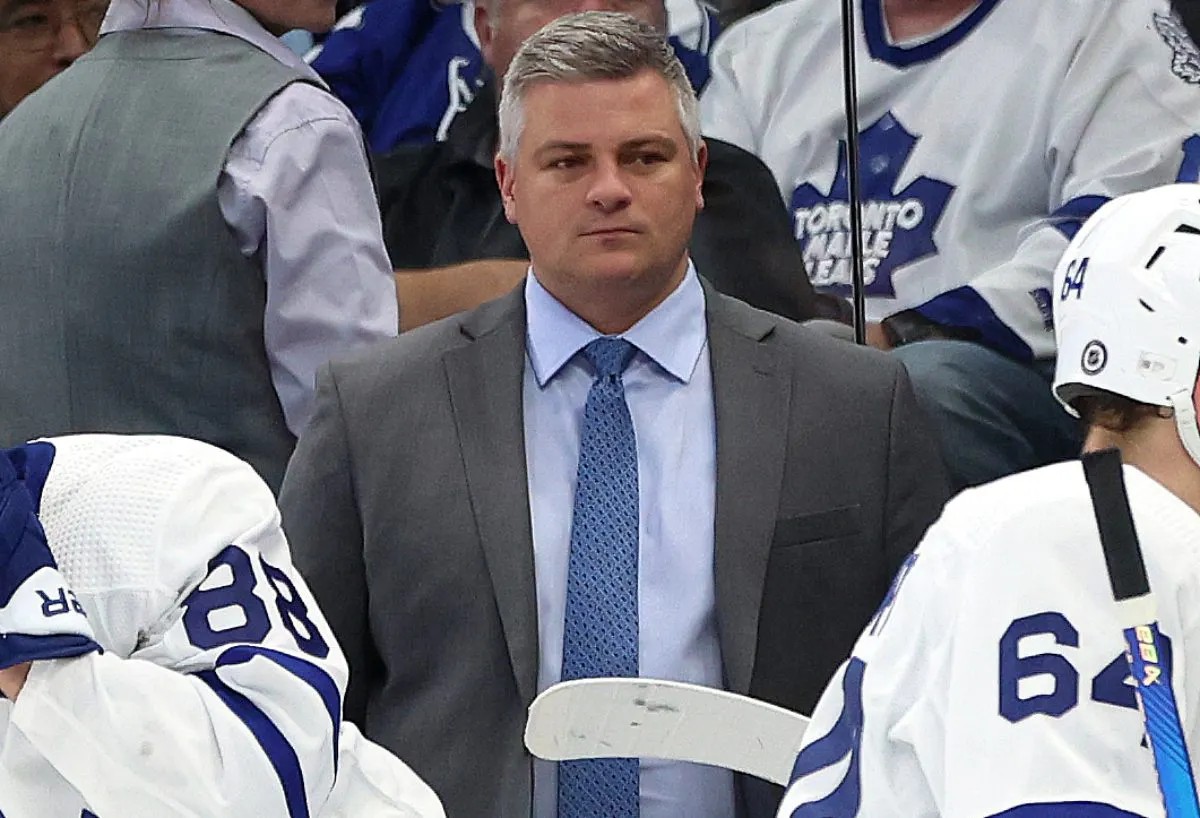
“To me, the tougher one to give up is the second one. We had full possession of that puck. Our D gets it in our forward’s hands, and we have a chance for a very clean breakout. Instead, we give it back to the defenseman again and compound the problem. It ends up in our net.
To me, that is the game right there.”
– Sheldon Keefe on what cost the Leafs the game against the Pittsburgh Penguins
I was really surprised to hear that Sheldon Keefe thought this determined the outcome of the game.
The Leafs have regrouped during Keefe’s entire tenure; it’s really been a calling card of his teams. In this situation, TJ Brodie possessed the puck with the time and options to make a proper play. His D partner on the ice, Conor Timmins, told him to go the other way, which he had the space and time to do.
Ideally, Nick Robertson would have advanced the puck forward, but Brodie made a weak play on it. Perhaps he was slightly surprised/thrown off by Robertson passing it back, but he still had more than enough time to do pretty well anything other than what he did.
That play aside, it didn’t decide the game, either. The Leafs were caved in during the entire second period, and it was the second straight game in which they held a lead and lost. In the third period, the team hardly mounted a push of significance, either.
Not only was this Robertson play not some terrible, unforgivable blunder, but it also made the game 2-2 halfway through the second period. A really puzzling observation that makes you wonder what Keefe is seeing out there.
“His 1-on-1 play is right up there with anyone in the league right now if not number one. What I’ve been noticing this year is his spins and turning away from guys, it doesn’t look like he’s skating really. He’s gliding, but he’s getting by guys. It’s been pretty impressive”
– Mark Giordano on William Nylander
I mentioned this last week in regard to William Nylander’s tight turns. I really think he’s baiting defenders and challenging them to turn as well as he can. He is beating a lot of defenders by sucking them in and spinning off of them with some level of ease. It’s really become a staple in his game and an effective, low-risk play.
“That was about 10,000 pounds off my shoulder. I needed that one for my confidence. It was tough sledding the last couple weeks being scratched & even the weeks before that I just wasn’t playing very well.”
– Ryan Reaves on scoring his first goal of the season
I was genuinely happy for Ryan Reaves. I believe everyone has seen the plus-minus stats by this point. Objectively, a lot of those goals haven’t been his fault, and he happened to be on the ice. That is a really tough way to start his Leaf career. He can bring a real element of physicality to the team, but it’s only notable if they aren’t getting scored on in the process.
Tweets of the Week
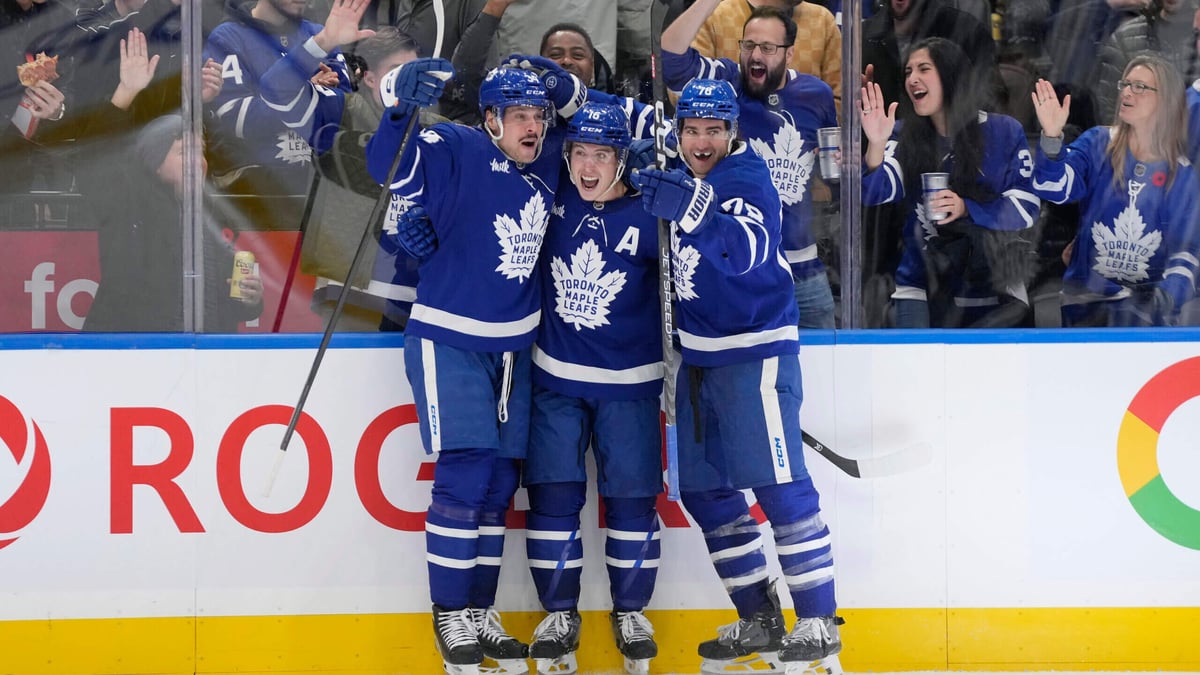
In 19 games, #Leafs have more regulation losses (six) than they have regulation wins (five).
— Terry Koshan 🇺🇦 (@koshtorontosun) November 26, 2023
The Leafs are 12th in points percentage and have a plus-one goal differential right now through essentially a quarter of the season. They have shown in the past that they can turn that around in weeks, but it’s almost December. At this point, it would be hard to suggest they are a top-10 team in the league, which is legitimately concerning. They are underachieving.
"I was on the plane with him…he's hurt"
This morning on #FirstUp, @mike_p_johnson shared why he thinks John Klingberg may not play again for #LeafsForever. 👀 Do you think MJ's right? Let us know! 👇 pic.twitter.com/oioncti1rD
— First Up (@FirstUp1050) November 23, 2023
Not sure why it’s been questioned, but there’s no doubt John Klingberg is seriously injured. Why would a player like him (on a one-year contract) not want to play, and in particular, why would he not play on a once-in-a-lifetime opportunity in his home country if he could?
For his sake, I hope he can get healthy. For the Leafs, the LTIR placement opens up space and opportunity to run a full roster, move players in and out of the lineup, and acquire talent.
Tbh I’m not gonna lose sleep over a regular season cold stretch that line is having. They’ll get their points and IMO they should be judged by playoff performance now. It’s admittedly the perception of that duo being immune to shuffling when playing like trash that gets annoying.
— Active Stick (@TheOakLeafs) November 26, 2023
I have no doubt that the Leafs’ top two players will heat up at some point and see their numbers improve, but if the goal is playoff production, the regular season needs to be about building habits, and that’s really been the issue.
Five Things I Think I’d Do
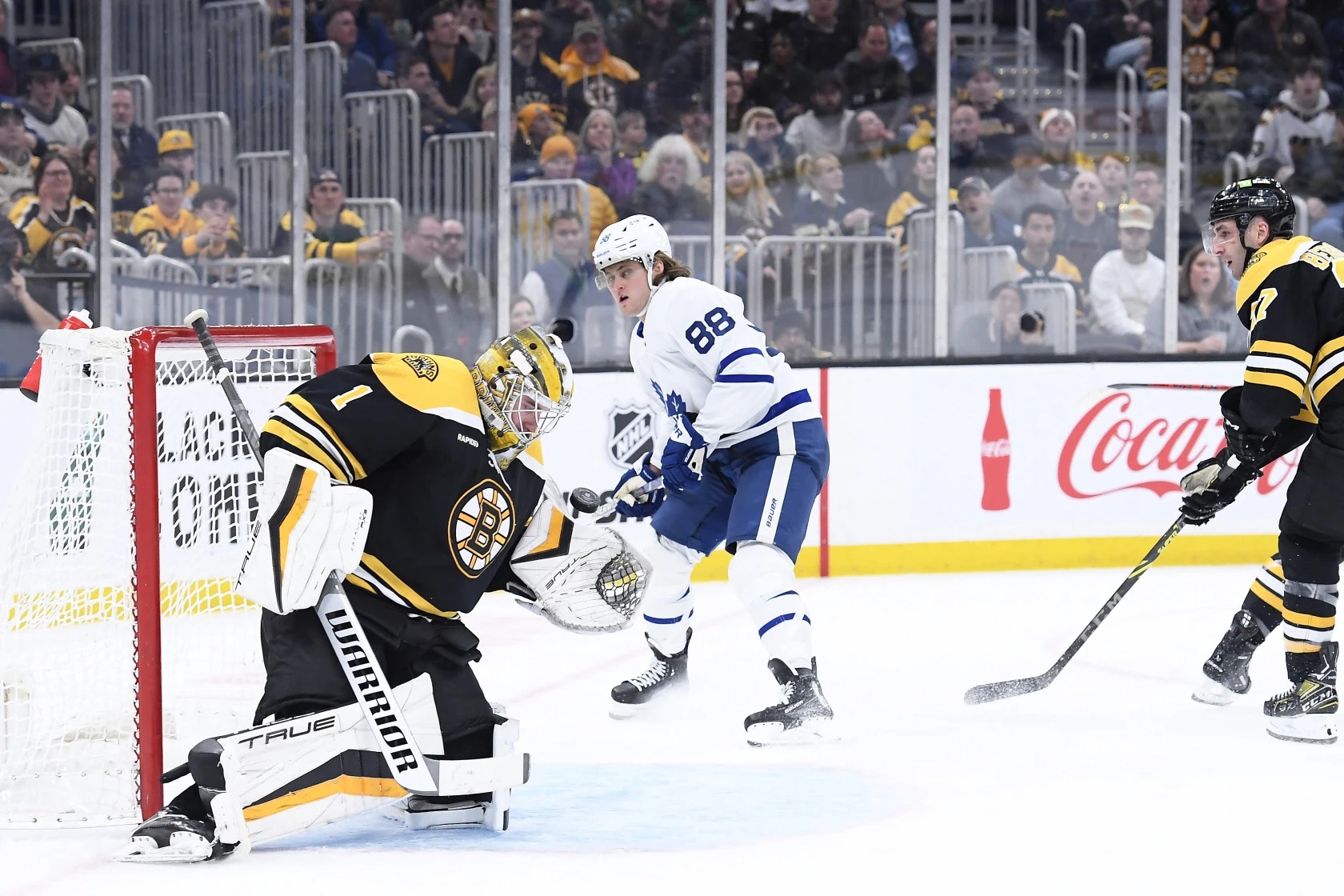
1. I think I’d simply swap Mitch Marner and William Nylander to see if it shakes things up. They don’t need to overhaul all of their lines at this time, but the point streak is over for Nylander, the top line is stringing together poor games, and this basically happens every year. These pairings are locked in to start training camp, one of the two lines plays great but eventually comes back down to earth, and they flip them. Last year, Nylander and Matthews started together before they switched it up. Both have worked so well at times that there’s no true correct answer, but the wrong answer is to keep them together come hell or high water.
[Editor’s Note: Sheldon Keefe has mixed up the top pairings in Monday’s practice, moving Nylander next to Matthews and Marner next to Tavares].
2. It should be rather obvious, but when the top power-play unit doesn’t do anything for a minute and a half and the second unit comes on the ice with ~30 seconds left, I think they should start the next power play. Generally, the Leafs’ top unit is great, but when they don’t do anything with the man advantage and they do even less at 5v5 in the time between power plays, the coaching staff has to A) send a bit of a wake-up call, and B) reward the other players. There has to be some accountability in this regard.
3. I think I would go back to the defense pairings from the game against Chicago (Morgan Rielly – TJ Brodie, Mark Giordano – Jake McCabe, William Lagesson – Conor Timmins) and try to give them runway in hopes of some consistency and stabilization. I’ve liked Simon Benoit’s game this season (it’s unfortunate, but he’s really just caught in a numbers game) and would be quick to put him back in if anyone struggles, but I’d give these six D some time to see if they can gel.
4. I don’t know what Bobby McMann did to be a healthy scratch for two straight games. I think the fourth line looked their best with him on it and played important shifts, but he didn’t dress again when the team returned from Sweden. I don’t think they necessarily win either game if McMann plays (the fourth line was even good versus Chicago), but he earned more opportunity and should be put back into the lineup. They need four lines to be successful, and the most complete they’ve looked as a team so far is when McMann has dressed.
5. I think I’d give Joseph Woll the next start and then decide after that who plays next. I don’t think Woll is stealing the net by any means, but Ilya Samsonov is playing his way out of it so far. More often than not, he has given up a really bad goal or two each game.





















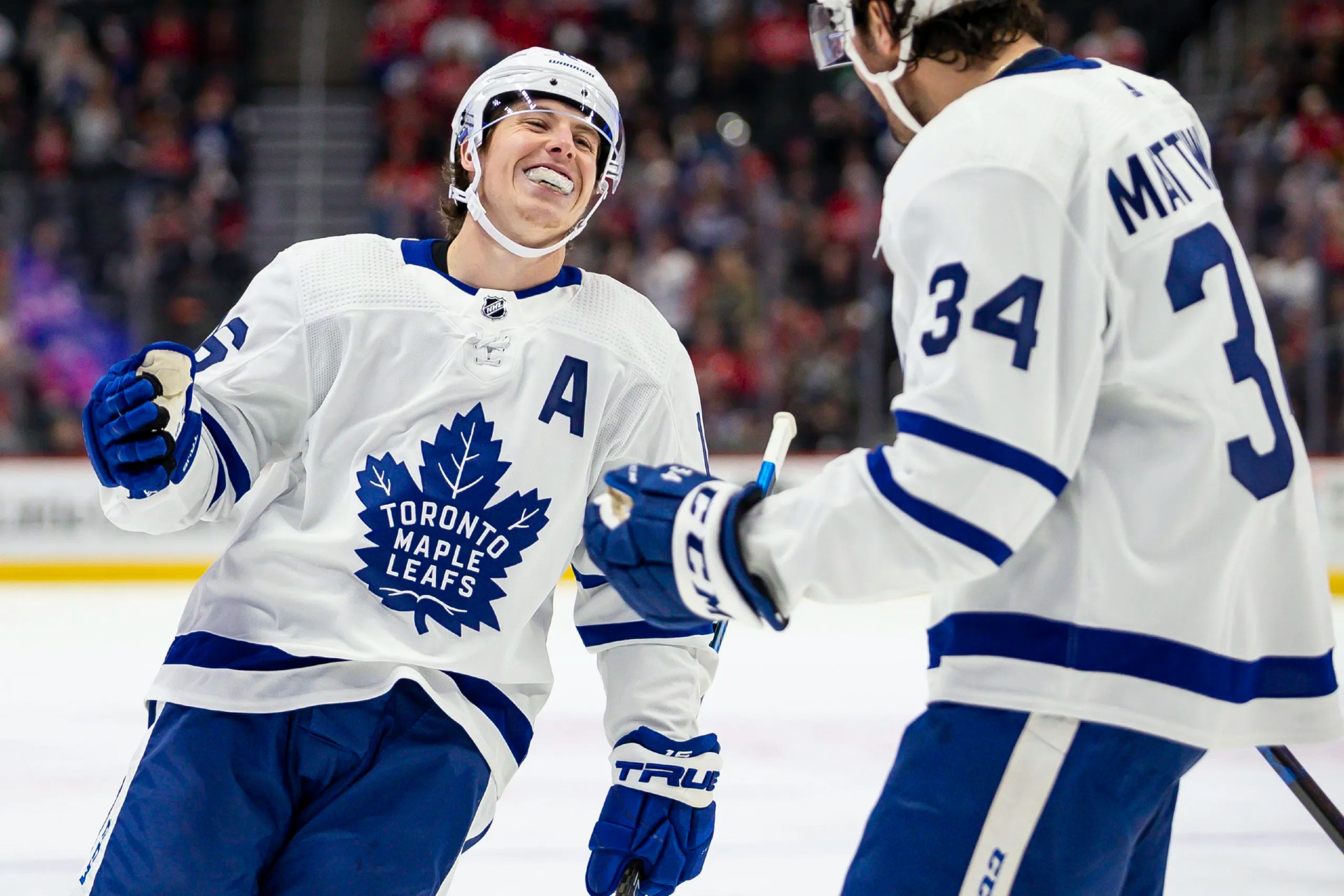
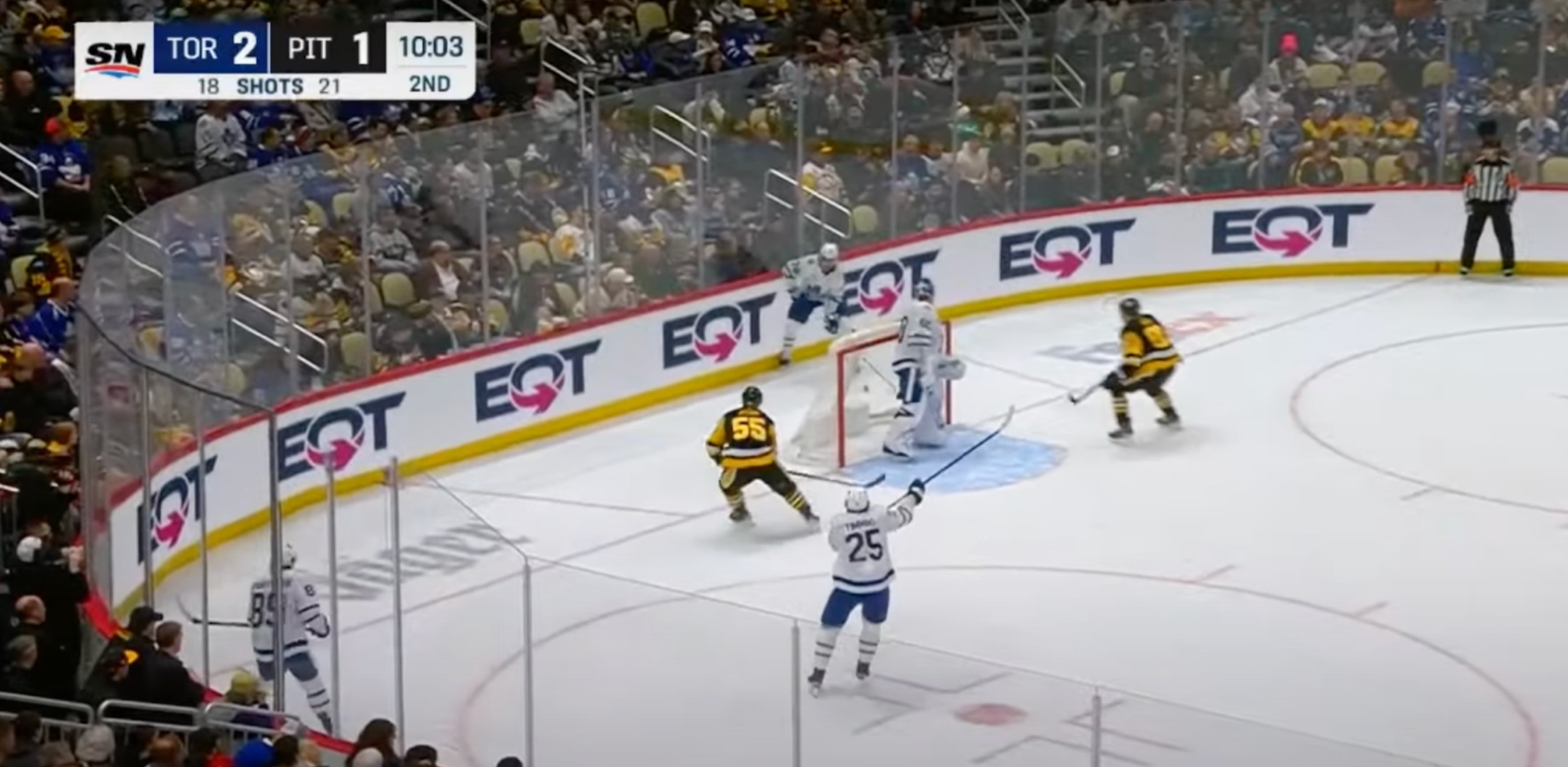








![New Leaf Anthony Stolarz on the opportunity in Toronto: “In Florida, I knew my role as a backup… Now, [Joseph Woll] and I are competing for starts… As a goalie, that’s all you can ask for” Anthony Stolarz, Stanley Cup win, now Maple Leaf](https://mapleleafshotstove.com/wp-content/uploads/2024/07/anthony-stolarz-sc-100x70.jpg)
